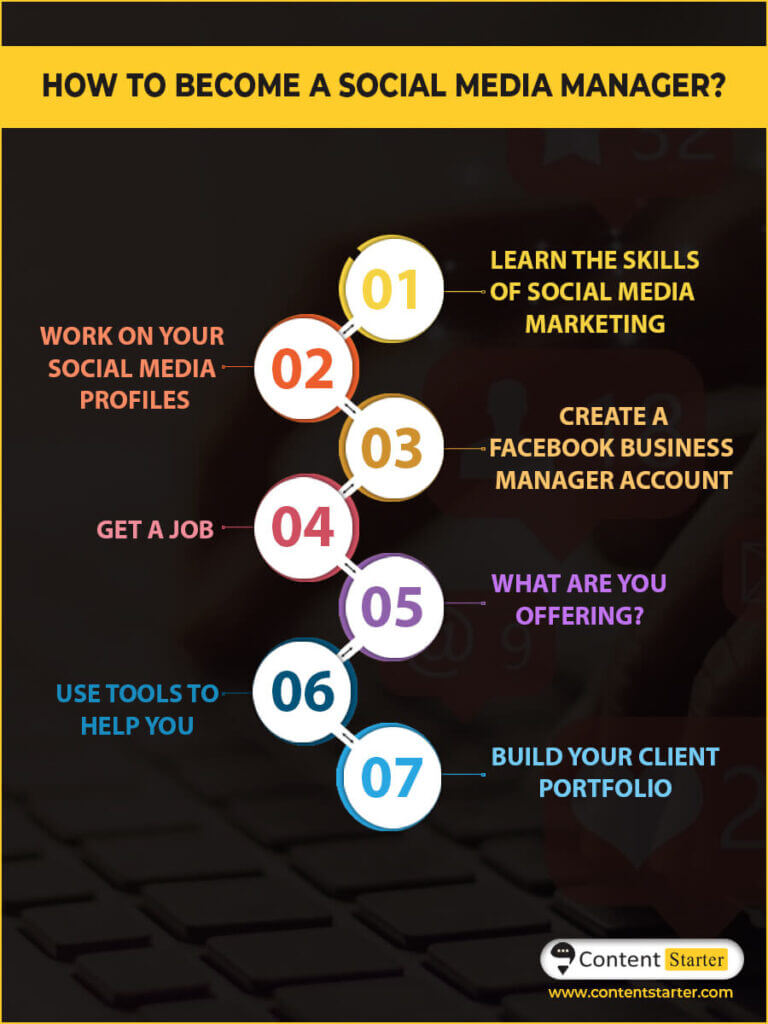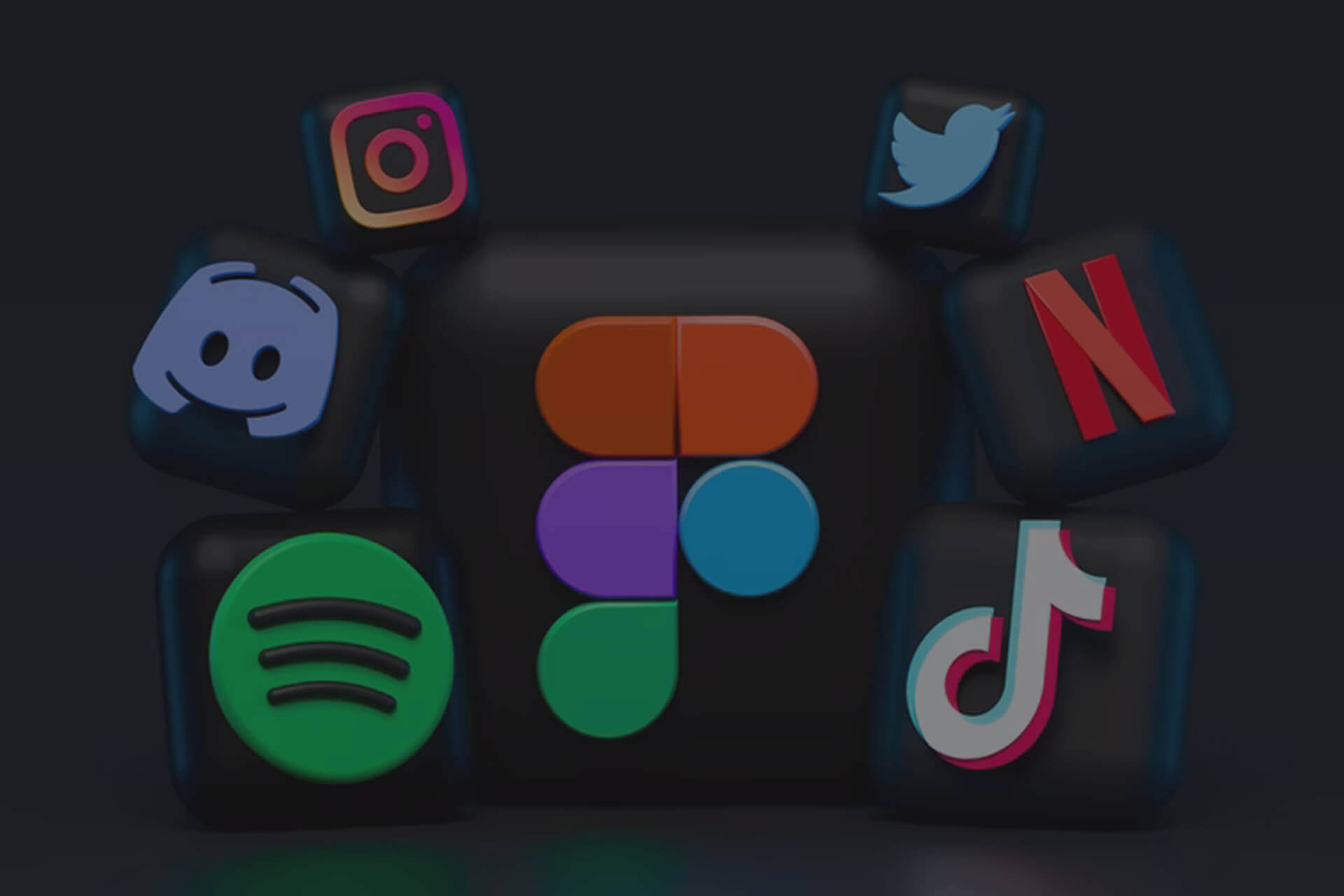Social Media Manager: The Next Step After Content Writing
Are you a content writer who scrolls on social media constantly and barely manages to finish the work before the deadlines? Are you someone who knows the latest trends and memes on social media? Do you wish that you got paid to scroll on social media? I have good news for you: there is a way to earn money through social media; it is called social media management. So if you want to know:
How to become a social media manager?
What does a social media manager do?
How to make a social media manager resume/portfolio?
Keep reading, and we will answer all your (super important and relevant) questions.
How are content writing and social media management different?
Often content writers write for social media posts, and some may even specialise in writing for just social media. However, writing content for social media is just a small part of social media management. Since social media management includes ideating, designing, posting, analysing, keeping up with the trends, and experimenting, a social media manager’s job is much more extensive and focused on social media websites.
Plus, as you will read in the skills a social media manager needs section of the blog, a social media manager not only needs writing skills but also copywriting and design skills.
What does a social media manager do?
After understanding that a content writer and social media manager are different, let’s see what a social media manager even do? Since everyone operates social media, the job of a social media manager may seem easy and trivial; however, anybody who has worked knows that every job has its challenges. Thus, being a social media manager and handling your accounts are two very different walks in the park. Here are three things that social media managers do broadly daily:
Social Listening
Since the advent of social media, it has become easier for customers to raise their concerns and appreciation for the brand. With just a few tweets, either a brand can become the talk of the day or get socially reprimanded; we have seen this happening with many brands over the last few years.
A social media manager’s responsibility is to listen and keep an eye on what’s happening and contain a bad situation for further hurting the brand’s reputation.
Social Influencing
We are all familiar with influencers and their brands. Every influencer has a style and niche, and one may even say that an influencer is a brand in themselves. Similarly, brands are also influencers in today’s day and age. They influence their audience and thus follow specific brand tonality whenever they post to increase their brand awareness. Therefore, social media managers have to create posts, videos, tweets, etc., in accordance with the brand and distribute it accordingly.
Social Networking
Social media websites were first introduced for networking, and they are still great instruments of networking. Networking not only allows a brand to find new customers or advocates for their brands but also helps them find potential employees too. Thus, a social media manager’s job is to network, too, by engaging with their comment sections and replying to their direct messages.
Social Selling
Every company or brand is trying to sell something, and the features on various social media platforms, allows businesses to sell too. Thus, a social media manager’s job is to promote sales of their products because, ultimately, brands build their brand to leverage and sell their products.
Why should you switch to a career in social media management?
After understanding the responsibilities, social media managers’ jobs may seem a little daunting. So why should one take such a heavy responsibility on themselves? Well, as it turns out, working as a social media manager has its perks and here are a few of them:
Work with social media
I am guessing that you are a GenZ or a millennial who has grown up with social media. And at some point, you were using it so much that you thought to yourself that this should be a career. Well, guess what? It is a career and one that has more demand than ever. Thus, if you are updated with trends and memes on social media, working as a social media manager might just be your dream job.
Positive impact
Now more than ever, brands realise the power to join a cause to stand for something bigger than themselves. Thus, brands use social media to stand for causes they believe in and becoming a social media manager means you get to give your input based on the social listening you have been doing. In this way, you can positively impact the world by sharing your brand’s message.
You will know what’s happening in your company.
Whether it’s an expansion, the release of an IPO, a new product launch, or any other development in the company, a social media manager would know about it. Why? Because social media channels need to either inform their audience or market the new release on social media thus, as a social media manager, you will always be in the loop.
Real-time feedback
The feedback you get for your work will always be real-time since the world of social media works so fast. Thought of a viral idea? Post it online, and you will see if it will go viral in a week or so. It may seem intimidating at first and will be disappointing for sure. However, over time you would pitch and work on so many ideas that over the years, you would know what will work and what will not.
Which skills are super important in your career in social media management?
Are you eager to become a social media manager? Well, then here are some skills that you need to pick up (or brush upon):
Writing: Since you are transitioning from content writing to social media manager, your previous skillset as a writer will help you immensely in your transition. However, if you have no experience writing for social media and have written long-format only, you must tweak your writing style. Since social media posts are usually short-form content, you must practice writing concisely and sharply.
Social Media Platforms understanding: The most prominent social media platforms currently are Instagram, Twitter, LinkedIn, and Facebook. Thus, you need to understand the intent and the audience on each of these platforms. The tonality, length, format and type of content on each platform will be different, and thus you need to understand that before becoming a social media manager.
Data Analysis: I am not talking about deep data analysis, but a penchant for data will help you understand what your audience likes about you and what they don’t. Thus, data analysis is a crucial skill to becoming a social media manager.
Graphic design skills: A platform like Instagram is visual, and thus simple texts would not work on it. Therefore, basic graphic designing skills will help you design posts that will help you go viral. You can also acquire photoshop skills if you want to; however, many companies have graphic designers, and thus you need to know only the basics to suggest changes if any.
Creativity: Social media has an influx of content every minute, and thus you need creativity to break that clutter. And unlike popular belief, creativity is not a talent you are born with but a skill you can acquire over time.
Experimentation: Since there is so much content on social media, your ideas may have already been done and dusted. However, your unique creative twist can make a bland idea into an exciting one. Thus, to discover that clever twist, you need to keep on experimenting. Experimentation is a must in this profession since the time span for each post or tweet is short, and thus you need to have a bunch of ideas and the courage to experiment with them.
How to become a social media manager?

Learn The Skill Of Social Media Marketing
Apart from understanding the platforms, you also need to familiarise yourself with both organic and paid marketing. Since there is extreme competition between companies, and individual creators for the audience’s attention, paid marketing allows the brands to reach their target audience faster. Plus, social media marketing is cheaper than traditional marketing with a higher return on investment.
You can learn social media marketing from various online courses that teach organic and paid marketing. Next, you need to understand these social platforms:
It is the oldest and widely used social media platform with billions of active users. Thus, companies want to leverage that and market themselves. The way to market here would be to run ads, join quality groups, and post content to attract your target audience.
Instagram is another social media platform that GenZ and millennials mainly use. It is a visual platform with a focus on videos, images, reels, and stories. Thus, brands use it to engage with young audiences in their language (which usually means making memes, trendy reels, and aesthetic posts).
LinkedIn is a professional networking platform and is thus a platform that B2B companies can leverage. Here the content format is mostly text, and longer forms of content are encouraged on LinkedIn. It is also a platform that employers and companies use to get new employees.
Twitter may seem like an angry spitfire on the internet where people are fighting with each other on the biggest to smallest issue. However, Twitter is also a platform where brands engage with their customers and the customers post their grievances. So, as a social media manager, Twitter is a very crucial platform to understand.
Work On Your Social Media Profile
Working on your social media profiles- whether your Twitter, LinkedIn, Instagram, or Facebook profile is a no brainer. If the thought of handling so many profiles is freaking you out, maybe start with just one. But the idea is to start handling and seeing what works and what doesn’t. Moreover, learning to manage your social profile will not only help you deploy the skills you learnt in the courses but also help you attract clients and show them what you can do for them.
It doesn’t matter if you want to work as a freelancer or as an in-house social media manager; you need to maintain a social presence because it will help you build a personal brand that will help you get better clients and jobs. Moreover, you can do them on your profile instead of the client’s profile for any experiments you want to do.
If the experiments work, you can show your bosses and try them on your client’s profiles. If these two advantages weren’t enough for you, the third advantage that might convince you to start working on your profile is the fact that you will find amazing people who do similar work as you, and the community you make online will help you push through the dark days. And sometimes, you will draw your strength from them, and you will thank us for pushing you to start managing your profile.
You can start a new profile and start posting content there. LinkedIn only allows you to have one profile, so you have to use one profile only. You can create multiple LinkedIn pages; thus, you can experiment with pages instead if you are hesitant about using your personal LinkedIn profile.
Twitter, Facebook, and Instagram allow multiple IDs, albeit from separate emails, so you can go ahead and make a separate one and promote your content from your business accounts to your personal ones for the boost. Remember that you should make business accounts because that gives you access to deeper analytics. Go ahead, create your profile right now, and we will be waiting for you (go! go! go!).
Create a Facebook business manager account
Now that you have your personal business accounts set, you need to create a Facebook business manager account to handle your clients’ profiles. It is better to do it now and get it over with now than later when you have clients on your plate. Since businesses and brands use Facebook business pages, they can give you access by adding your business manager account, and there will be no fuss and no worries.
Get a job
Now that you have all your accounts set up, it is time to start looking for a job to use all your knowledge to help clients get more customers or increase their brand awareness. You can use LinkedIn to reach out to potential employers by contacting HR or the marketing manager. Since you have experience as a content writer under your belt, you can use that as leverage to switch to a social media managing job. Since they are related, you can also say that you bring more to the table due to your extensive knowledge of content that works on the internet.
If you choose the freelance option, you can prepare a pitch deck and state your previous accomplishments and the result on your social media profiles. Pitching to many clients and cold emailing them (detailed blog on how to cold email is here) will help you get your initial clients, and as you work and achieve results for them, you can use the experience and your learnings to charge more to your future clients.
What are you offering?
Before you start shooting cold emails and pitching to clients, you need to decide what you are offering and how much would you charge for it. For example, an offer you can make is handling an Instagram profile for a business that focuses on increasing reach for Rs 20,000. You also need to define the time you would take to deliver the results you are promising the client. If you are offering to increase their reach using only organic methods, you need to specify how long it would take you to achieve the goal. Would it take you a month, two months, or six months perhaps?
You can also offer whether you would be handling the profile’s content or handling it completely. Make different packages, and accordingly upsell and downsell for each client’s needs and budget. The lower the effort from your side, the less would be the charges and vice versa. Take your time figuring out and talking to other social media managers, too, to gauge the industry standards.
Use tools to help you
You will realise that handling many accounts means switching between different accounts and being afraid that you posted client A’s posts on client B’s profiles. Moreover, you will also see that it gets overwhelming, and you feel that you can’t do it anymore.
Buffer App
It is currently not possible to schedule carousels on Instagram. However, Buffer helps you schedule carousels and posts. You can also schedule posts on LinkedIn, Twitter, and Pinterest within a single dashboard. Buffer makes it easier for social media managers to handle multiple profiles. The free version lets you add three profiles, and beyond that, you need to buy the subscription.
One other great thing about Buffer is that you can access the analytics and see all the insights in one go.
HootSuite
HootSuite is similar to Buffer but has more features like social listening. Their social listening feature lets you see the conversations about your brand, whether a bad review is going viral or not, etc. If one of your offers monitors online conversations about your brand, HootSuite is a must-have tool in your toolkit.
Notion
Notion is an all-in-one workplace that allows you to collaborate and organise all content and processes in one place. A single person can use all the tool’s features for free, and therefore it is great for freelancers. You can also easily collaborate with different people, and thus it will make working as a team easy for you. If you wish to read a review and know more about the tool, check our review here.
Canva
We discussed earlier the importance of design skills in your social media management career. But not all of us can learn photoshop quickly, and it is a bit challenging to learn. Thus, Canva comes to your rescue and will help you design beautiful graphics within a few hours. The tool is a drop and drag, and you can use their library of free templates to make your social media graphics. Plus, collaborating on canvas is super easy, and this is one of the most crucial tools in your social media management career.
Build Your Client Portfolio
Charging higher means you need to show your clients that you bring more to the table. Once you start handling your client’s profiles, you will understand what works in one industry and what doesn’t. Similarly, you will also make mistakes and learn from them. You need to comprehensively understand everything and see what your unique selling proposition is. What part of the job are you best at, and what do you love the most? The answer will be your unique selling proposition.
Once you understand that, you need to understand your client’s pain points and how your strong suit fixes that. For example, the client has a product that is tough to promote on Facebook due to Facebook’s policies. They often see their ads not working for them. If your USP is organic marketing on social media, you can pitch that your marketing will be organic and thus help them circumvent their problem with the Facebook policy.
Another way of showcasing your expertise is through case studies. Use Canva to make case studies about your previous clients and the results you were able to deliver. Post the case study on your social profiles and your website. You may ask if a website is necessary, and we would say it’s not needed. Still, a website is required if you want to look for professionals and pitch to international clients.
Moreover, social media platforms are volatile, but you are safe from the volatility when you own a website. Plus, as you grow, working on your website can also generate leads for you, and since you have experience writing content, you can use your experience to post on your website or monitor the content on it.
Conclusion
To sum up, we talked about how content writing and social media management are different, followed by what a social media manager does. We also discussed the crucial skills for his career and how to become a social media manager. We also discussed the social media manager resume/portfolio you will need and how to make one.
While we are discussing social media, follow us on Instagram, Facebook, Pinterest, and Twitter.





